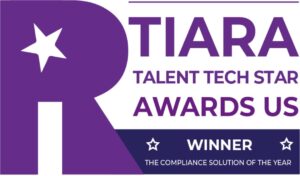The role of HR in today’s businesses has significantly evolved in the last few years. A Gartner survey found that 83% of leaders in HR feel they are required to do more now than three years ago. Fortunately, because many understand technology’s role in helping them tackle all they are tasked with, digital transformation has become one of their top three priorities.
While HR professionals are increasing their technology spending, and experts believe the market will double to $81.84 billion by 2032, 56% of HR leaders still feel their technology solutions and strategy are insufficient for their current and future business needs.
These statistics make one thing quite clear: HR leaders could use some help when it comes to vetting HR software and maximizing its success.
To properly vet HR tech, leaders must evaluate their goals, understand their needs, perform system analysis, and assess their software options. To encourage adoption, it’s helpful to get senior management buy-in, prepare well, offer training, and ensure employees understand the purpose.
Learn how to carry out these steps to make your next HR tech buy worth the investment.
How to Vet HR Software to Maximize Success
Vetting HR tech before you buy should be a top priority, as doing so keeps you from spending money on something that doesn’t bring results. Here are some critical steps you need to take to ensure you gain the largest possible ROI from your HR tech.
Address Your Goals
The first step in the vetting process has less to do with the actual software and more to do with assessing your own needs. You need to take the time to understand your HR strategy and goals.
What business problems does the department need to solve? Once you understand the goal and the problem, you’ll better understand the kind of technology you need to solve it. Additionally, you’ll be able to measure the success of your technology adoption by whether it has solved your initial problem.
Understand Your Needs
To align your technology with your HR strategy, you need to know what technology and software features will solve your problem or get you to your goal. For example, if you have a goal to improve the employee experience, you may want to purchase technology with self-service features that make it easy for employees to get what they need without waiting for HR to provide it.
If you want better collaboration between remote and in-office staff, you may want to consider upgrading your videoconferencing software. It’s also important to know how much you have in your budget to spend on a solution, as this will determine what software you can purchase.
Perform a Full System Analysis
Before you purchase any new technology, you need to take inventory of what you already have. What about software in your technology stack with features you haven’t used yet? Do you need to eliminate a few programs that aren’t working?
Additionally, you’ll need to know if compatibility exists between the new software and the other platforms in your stack. It’s important to think about centralizing your data and having programs that can share information.
You don’t want to end up with many different programs that require you to continually download and re-upload spreadsheets to share data. This can result in a proliferation of duplicate, incorrect, and out-of-date information, which can hinder good decision-making.
Assess Your Software Options
Taking your time with the first three steps will help you select the right software for your needs. Once you have created a list of possibilities, talk with each vendor about their software.
Ask about customer support options and testimonials. It’s also a good idea to test-drive the software via a demo or free trial to see if it’s user-friendly and truly assess whether it will meet your needs.
Promoting HR Technology Adoption Among Your Workforce
Implementing HR tech will be much more effective with the entire organization on board. If this has been challenging for you in the past, here are a few tips to encourage widespread adoption:
- Get buy-in from senior managers to instill confidence in employees
- Work out the kinks before rollout to reduce employee frustration
- Clearly communicate the software’s purpose and usefulness
- Offer in-depth training, especially for those who aren’t tech-savvy
- Provide employees with ongoing support through either IT or the vendor
- Ask for feedback and insight from employees and make tweaks and changes accordingly
If you follow these steps and prepare well, your workforce will likely be much more receptive to the changes that come with software implementation.
Keep Your Business Moving Forward With the Right Technology Solutions
With HR tech spending on the rise, many software solutions are being developed for this growing market. The plethora of choices makes it even more crucial for HR leaders to be more selective about spending money.
Make sure you’re properly vetting software and vendors to ensure your needs will be met. Doing the work up front ensures that your technology stack will help solve your HR and business problems rather than creating more.






